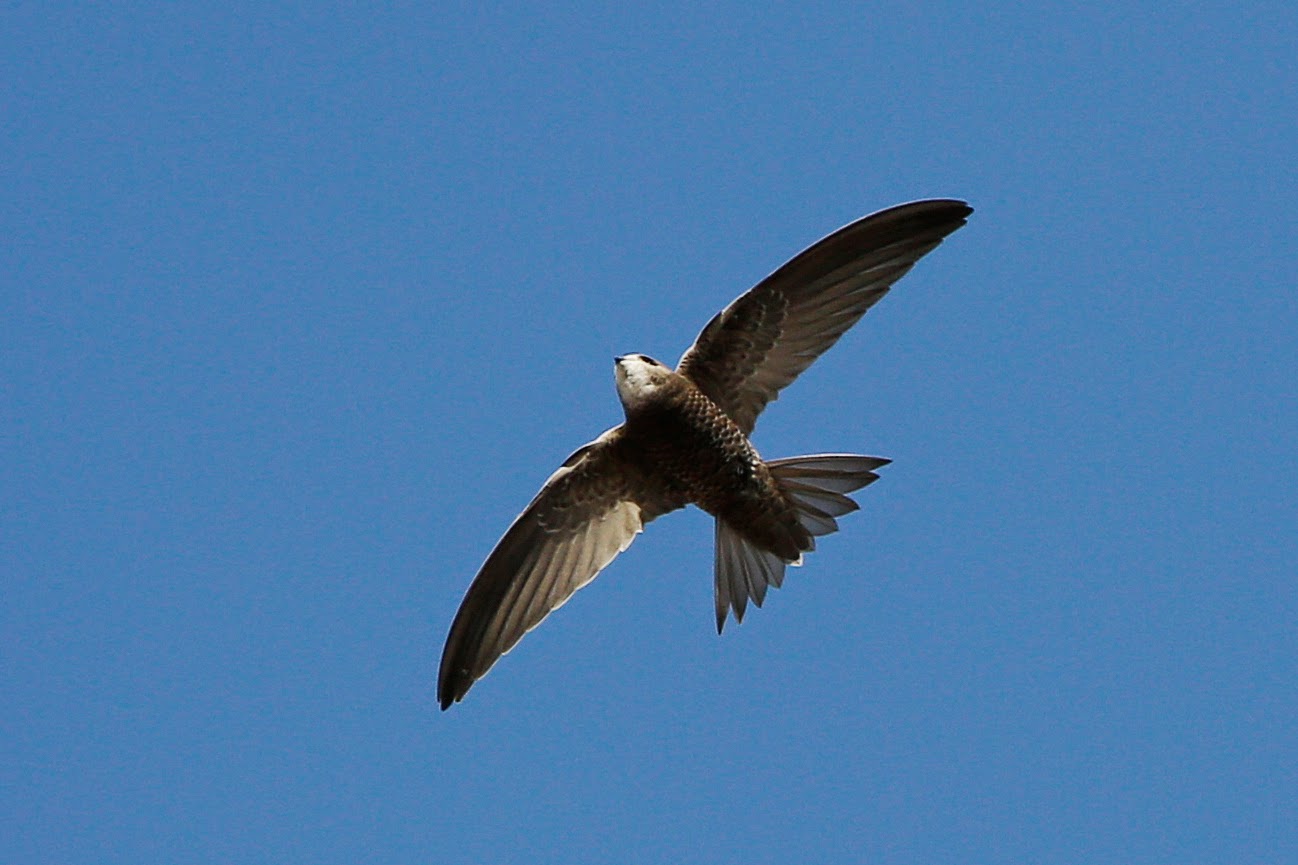Once we had our fill of the swifts, we drove a short distance outside of Taroudant to walk a section of road that paralleled the Souss River wadi. We found a few birds along the way including Sardinian and Orphean warblers, and many woodchat shrikes with their lovely rust colored caps.
As we walked along we spied in the distance a booted eagle lifting off to continue on its migration, and on the ground we came across a spur-thighed tortoise (my photo).
Mustafa picked us up in the van to move to a new location, and as we were driving back out to the main road we ran into a group of 9 European bee-eaters that proved as colorful as the blue-cheeked bee-eaters we had seen a few days earlier.
Our next spot was even less birdy than where we had just been with a few crested larks, a couple of grey shrikes and another Orphean warbler. Then Mustafa signaled for us to come to the van. He had just seen 2 fulvous babblers fly by which we relocated a little way down the gravel road.
It was getting towards noon, so we moved onto the Aoulouz Gorge. While Martin and Mustafa pulled together lunch for us, we scanned a nearby section of the river.
A pair of colorful ruddy shelducks set the tone for what would prove to be a very good birding spot. There were many little egrets and a few cattle egrets working the waterway. Also a little ringed plover well camouflaged fed along the edge, and a much easier to see common greenshank.
We got to see our second gray wagtail of the trip, and our first Moroccan form of the white wagtail.
The rumble in our stomachs pulled us back to the van for a quick lunch before walking up the mostly dry river bed and into the gorge in search of birds of prey. We already had seen a booted eagle soar overhead, and then a couple of common kestrels flew down off the cliff. But our primary target bird at this location was barbary falcon, which is very similar to a peregrine falcon.
As we were scanning the cliff face, a man began walking along the top of the cliff which to our joy flushed a barbary falcon that we proceeded to watch for the next 10-15 minutes. It would fly to the cliff face for a bit, and then fly out and around. It eventually moved far enough up the gorge that we decided to move to the other side of the bridge to see what that part of the river had to offer.
It was now mid afternoon, and it had become quite hot under the blue sky and bright sun. We found a gray heron, which is very similar to our great blue heron. A sedge warbler flew across the water, and had our attention briefly before a kingfisher flashed into view with a fish in its bill.
We also found a reed warbler plus a second warbler that was clearly different. Martin got some photos of it for later study. A purple heron flushed and flew away before we could get a photo. Another booted eagle flew far overhead. The group was beginning to flag a bit because of the heat, so we worked our way back to the van.
On the way home we stopped to look for Spanish sparrows. We kept seeing groups of them flying away from us, but none would settle near us. We did get good looks at a zitting cisticola though. Finally, while not close, Laura was able to get a shot of a few Spanish sparrows feeding in a wheat field.
We now needed to get back to our lodging to have dinner a bit earlier than normal since we would be going out again to look for red-necked nightjars. Our meal proved to be simply outstanding. A tagine of some kind of fish that was cut into "steaks" and covered with chermoula sauce plus 2 other kinds of smaller fish that were quickly fried (my photo). If you look closely at the upper plate you can see that 1 of the fish is very tiny and the chef had tucked its tail into its mouth prior to cooking it.
Accompanying the fish dishes were carrot, cucumber/tomato, and fava bean salads plus bread and butter. The dessert was a crispy pancake like confection covered with chocolate and nuts. I believe that if I had taken a poll, the group would have voted this the best meal of our trip.
After dinner we quickly did our bird list review, and found we had added 9 new trip birds, and now had seen over 200 different species and sub-species. With that to inspire us, we returned first to our initial morning stop to look for the nightjar, but did not locate one. Next up was the area where we had found the fulvous babblers. We kept shining our flashlights onto the shrubbery, and would find a number of spider eyes, but no nightjar. Then Mustafa located a pair of eyes not far off the road. He and Martin worked towards the spot, but the bird flushed. With some more searching, Martin relocated it, but once again it flew off before we could get definitive views of it. After another 30 minutes of looking, we decided to call it a night since we knew we could try again tomorrow evening. Stay tuned!






















No comments:
Post a Comment